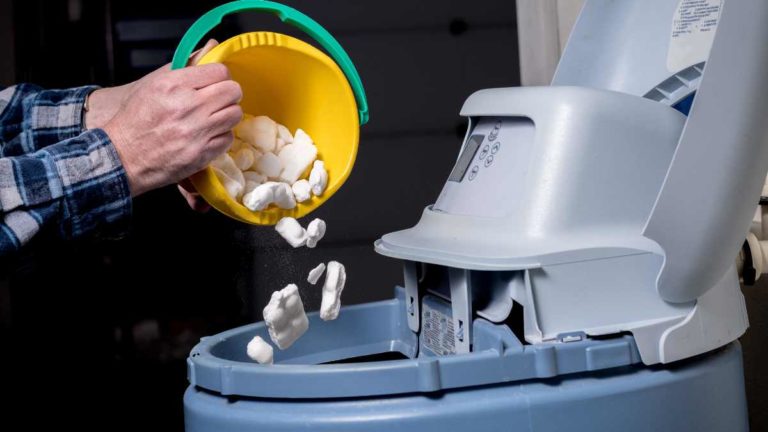WFH Energy Management: Avoiding the Work-from-Home Slump
Some days, you’re whipping through tasks, feeling on top of the world. Others, you’re staring at your screen, searching for a spark.
If this sounds familiar, you’re not alone. Welcome to the Northwoods life, where cozy days can test your energy.
Whether you’re working from home, growing a creative side hustle, or just enjoying the slower pace of the Northwoods lake country, WFH energy management is key.
The freedom of this lifestyle—no long commutes, more time for what matters—comes with challenges. Like blurry boundaries between work and relaxation.
After years of remote work, I’ve learned that tuning into what fuels or drains your energy is crucial for thriving.
Ready to dodge the slump and embrace your Northwoods groove? Let’s go.
Table of Contents
NOTE: Some links on this page lead to Amazon or other merchant pages. If you purchase through them, we may earn a small commission – at no extra cost to you. You can read our entire Affiliate Disclosure here.
Understanding Energy Givers and Energy Takers in Your WFH Life
Think of your energy like your phone battery.
Energy givers are those activities, people, and situations that charge you up. Energy takers drain your battery faster than scrolling TikTok on 2% power!

The tricky part about working from home is that the lines get blurry fast.
That comfy couch? Great for relaxing. But sit there during work hours – and OOPS! Suddenly you’re enjoying an accidental nap.
Your kitchen? A handy place when hungry – but also a distraction hole where you might find yourself… reorganizing the spice rack instead of finishing that report.
Just yesterday, I noticed that my cat, Peaches, loves to interrupt my focus with treat demands—classic energy taker (though her purring later is a definite giver!).
Common WFH Energy Takers in Your Routine
Let’s talk about those sneaky energy thieves that hang out in our home office:
Digital overwhelm – That relentless ping-ping-ping of notifications is the energy equivalent of a slow air leak. Every interruption sucks a little more more mental energy. Texts, emails, Slack, MS Team… It’s hard to be “on” in twelve different places at once.
Lack of boundaries – When your office lives with you, work can creep into every available minute. Before you know it, you’re checking emails at 10 PM while brushing your teeth. (Been there, done that, don’t recommend it.)
The midday slump – That 2-3 PM energy crash hits different when your bed is just a few steps away. Without office mates to keep you accountable, it’s tempting to “rest your eyes” for a minute – and wake up an hour later.
Decision fatigue – Without the structure of an office, you’re suddenly making 87 more decisions daily. Most of us rely on co-worker feedback more than we realize: how to handle this customer; what to include in that report; when to schedule that shipment.
Working from home shifts that support. It’s all you, baby!
Isolation – Even introverts need some human connection – plus, the activity in a typical office setting keeps things interesting. Working from home can feel TOO quiet without those small office interactions! Time can drag and energy can crash.
If you’re looking to reduce digital overwhelm, I’ve found cube timers to be a game-changer. It helps me work in focused bursts and reminds me to take breaks – no willpower required!
Energy Givers to Fuel Your Day
Now for the good stuff – the energy boosters that’ll keep you humming along productively:
Morning sunlight – I swear by starting my day with natural light. It regulates your circadian rhythm and gives you an instant mental boost. My desk faces east for exactly this reason. No sunny windows? A light therapy lamp can work wonders, especially during our long Midwest winters.
Movement breaks – Even just 5 minutes of stretching every hour can reset your energy. Get up from your desk, move around and wake up your mind and body. The book Stretching by Bob Anderson is “THE book” for every stretching situation, your entire life. Seriously. Check out pages 128-141 for stretches specific to office and technology workers.
(Shameless brag: This book is an imprint of my 9-5 publishing job. Yes, I am lucky!)
- Anderson, Bob (Author)
- English (Publication Language)
- 240 Pages – 10/06/2020 (Publication Date) -…
Dedicated workspace – Having a space that signals “work mode” to your brain relieves decision-making energy. When you’re in that space, your mind knows it’s time to focus.
Mine is simple – and tricky: Our house does have a small, dedicated office. BUT I share it with my writing/blogging life.
How do I keep them separate? My desktop and tools are different for each.
- When blogging, I clear any work related items from my desk and use my personal laptop. I retrieve blogging books, paperwork, etc from a separate shelve of my office and then return them when I’m finished. I store my personal laptop there, too. Everything tucked away in one place.
- For my workday, I clear all personal items from my desk and grab my work laptop. Again, I keep a dedicated shelf of folders, paperwork and other tools specific to my 9-5 job. Then at the end of my work day, I unplug my work phone, logout of work and put everything back on its shelf.
Connection rituals – It’s WAY too easy to get socially disconnected when working alone from home. Schedule regular video, in-person or phone chats with office mates or friends.
These social moments really fill up your emotional energy tank – plus help maintain those important relationships.
Brain Food — The kitchen can be friend or foe to your workday! For smooth energy levels, skip the sweets, chips and other simple carbs that’ll make you crash. Foods with protein, fiber and healthy fats will keep you going without that energy rollercoaster.
Enjoy some yogurt, cheese and nuts instead.
Nature doses – This is so basic, but I have to include it. Truly – just a quick step outside to feel the breeze or listen to birds can reset your mental energy. I’m lucky to have woods right outside my door, but even urban folks can benefit from a houseplant or two.

Aromatherapy — I’ve found that lighting a scented candle can be a great pick-me-up when feeling blah. It’s a fast, cheap mental perk. An essential oil diffuser works great, too. Plant Therapy has some really nice oils, and they’re affordable. Citrus is a good energizing choice, or you can choose one of their blends.
Enjoy learning about an ideal home office environment? You might like my article on “7 Essential Elements for a Productive Home Office Setup” where I talk more about creating spaces that energize rather than drain you.
Creating Your Energy Management Plan
Do you want to know the secret to being productive? It’s NOT about being a slave to your schedule and just “pushing through” no matter what.
No — the secret to being productive is learning to work with your own, natural energy patterns.
The secret to being productive is learning to work with your own, natural energy patterns.
Start by tracking when you naturally feel most focused and energetic. For me, it’s first thing in the morning (after coffee, obviously) and then again around 4 PM.
I schedule my deep thinking work during these peaks and save simple things (like filing and report formatting) for my lower-energy periods.
Then build in recovery periods! My mid-afternoon slump drove me crazy till I used it as a natural rest period. Now I just take a quick walk outside or finish tasks that don’t need lots of mental energy.
And create transition “rituals” that separate work from home life. Without a commute, these boundaries need to be intentional. I close my laptop and step outside at the end of the work day – it’s my version of “coming home.”
Working With (Not Against) Your Natural Energy Rhythms
Your day is a series of ebbs and flows, not a sprint. No one sustains peak energy all day.
When you notice your focus waning, don’t fight it – pivot. Switch to a different type of task that matches your current energy level.

Low energy doesn’t have to mean low productivity if you’re doing the right kind of work.
Keep a “low energy task list” for when your brain feels foggy but you still want to be productive.
And stay flexible. Some days, energy just doesn’t show up. That’s okay. Focus on must-dos and be kind to yourself.
Finding Your Northwoods Balance
Mastering WFH energy management builds a sustainable Northwoods lifestyle—whether you’re working remotely, growing a side hustle, or enjoying the quiet. It’s about staying energized without burning out midweek.
Start small: Cut one energy taker (like muting notifications) and add one giver (like a morning stretch). Notice the shift, then build from there.
The Northwoods life gives you control over your environment and time. Use it to create days that fuel your body, mind, and soul.
What’s your top energy giver or taker? Share in the comments below!








